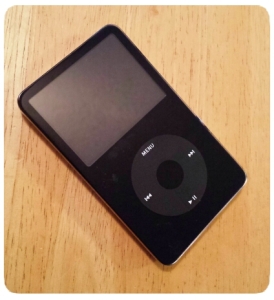I appreciate the fact that Apple provides a single updater for all their Windows software. It’s nice to consolidate things a bit with the profusion of updaters for what seems like each and every application (sort of like how every mobile device seems to need its own charger). But it has its flaws. I’ve mentioned some broken UI design, but the most annoying thing is that it tries to install new software instead of just updating what you have.
At work, I have QuickTime and Safari for development purposes. I don’t have iTunes. I don’t need it. I don’t even have speakers hooked up to the computer. But every time a new version gets released, it shows up in the Apple Software Update list, and I have to tell it to ignore it until the next time they update iTunes.
Now that Safari for Windows is out of beta, it’s doing the same with Safari*. And people are complaining. People like John Lilly, CEO of Mozilla, who sees it as an anti-competitive measure that dilutes users’ trust in software updaters.
Personally, I think there is a problem, but I hardly expected it to turn into the firestorm it has, with Asa Dotzler, c|net, digg, Techmeme, [edit] and now Slashdot, [edit 2] Daring Fireball and Wired (it just keeps going!), and dozens hundreds of commenters entering the fray.
There’s a simple solution, and it’s one of those rare cases where Microsoft gets something right in their software that Apple gets wrong.
- Create a separate section for software that isn’t already installed, and label it clearly. It can be in the same list, as long as there’s a separation and a heading.
- Leave the new stuff unchecked by default.
- Added: If set to check automatically, don’t pop up a notice more than once for each piece of not-installed software.
That’s it. Done. Apple still gets to leverage their installer to make people aware of their other apps, but there’s no chance of someone accidentally installing Safari (or iTunes) by accident because they didn’t read the list too closely. Take a look at Microsoft Update and how they (currently) offer Silverlight. It’s in a list of optional software, and it’s not checked until you choose it.
That’s all this really comes down to: sensible defaults and proper labeling.
Update: Well, two out of three ain’t bad.
*I have to admit getting a kick out of the title, “Apple pushes Safari on Windows via iTunes updater,” because my problem is that they’re pushing iTunes on Windows via their Safari updater. It’s a matter of perspective.
 As I moved our iTunes library last week, I worried that the new system might not be able to sync with the old iPod, but relaxed when I saw that Apple still sold the click-wheel iPod Classic. They discontinued it a few days later, but fortunately we were able to sync the old devices.
As I moved our iTunes library last week, I worried that the new system might not be able to sync with the old iPod, but relaxed when I saw that Apple still sold the click-wheel iPod Classic. They discontinued it a few days later, but fortunately we were able to sync the old devices.